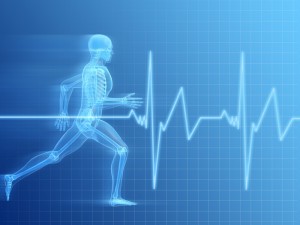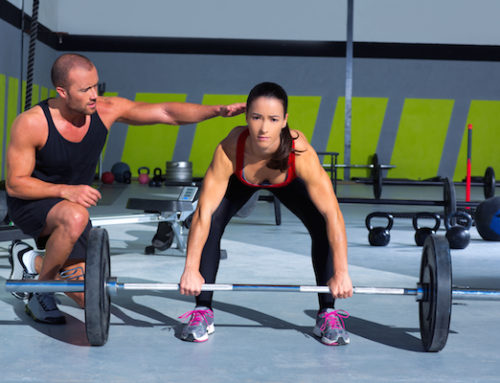I often get asked about session programming and tips to maximise the way someone is training for their particular results.
It’s quite an interesting discussion because it often depends on what ‘angle’ you’re coming from, or in other words, what specific area you’re talking about (if not all of them).
There are many aspects of fitness, and many styles of training or ways to train that achieve a very different result, including both performance and physique-based goals. We cover many of these in our webinars but what if your aim is more than just one.
Here are some examples of what may come to mind:
Goals: – Fat loss
– Fat loss
– Muscle gain
– Toning/shaping (which is a combination of the above two)
– Sport-specific conditioning (mostly covered below)
Aspects/Parameters of fitness:
– Strength
– Power
– Speed
– Hypertrophy
– Flexibility
– Cardiovascular endurance
– Muscular endurance
– Skill
Systems involved:
– Energy Systems: Aerobic and Anaerobic (Phosphate and Glycolytic)
– Muscular system: Muscle fibre recruitment/adaptation, growth, capilarisation etc,
– Nervous system: Coordination and synchronicity, firing rate, action potential.
So how do you go about planning for this in your training and how do you periodise those plans. Well, many of the text books and magazines can give you the typical scenarios for incorporating several phases of training into a quarterly/yearly plan, though most people sit year-round with the same plan, the same routine and basically sit on a maintenance program, ultimately achieving very little over the long run.
What if there was a way to incorporate training for several of the factors of fitness at the same time, without one focus negating too much the effect of another. As this is usually the expectation – jack of all trades master of none? You can’t be world class at both ends of the spectrum, e.g. strength-based and aerobic based. That’s like being the best built American football line-backer whilst trying out as a jockey to give Black Caviar another win.
 While this may not be the preferred method if your sole aim is to be the best in the world at one single aspect and not worrying about all the others, it can put most people on a progressive path forward in most aspects across the board.
While this may not be the preferred method if your sole aim is to be the best in the world at one single aspect and not worrying about all the others, it can put most people on a progressive path forward in most aspects across the board.
We know that at any given time it’s pretty hard to maximally train, for instance, the cardiovascular system in the state required to stimulate adaptation as well as the high-energy power-based anaerobic phosphate system or neural strength. However, one can certainly train several of the energy systems, several fitness parameters and for more than one goal in any given session if they so wish to.
When it comes to planning a program or training session, here is the hierarchy I follow to elicit maximum impact/adaptation from training, with minimal negative impact on the successive system, and while being conscious of recovery and maximising growth and repair. Basically, it all comes down to fatigue – when you want it and when you don’t:
1) First, the nervous system (this is covered in our online webinars) – strength, power, speed, non-fatigued efforts.
This involves anything that requires either precision/control (skill based) or maximal efforts/loads where all nerves must be firing at the same time to innervate as many muscle fibres as possible.
2) Second, the muscular system – hypertrophy, muscle endurance, glycogen storage
Muscular adaptations are usually brought about through volume. Therefore, development of the muscular system by means such a as hypertrophy (size), localised muscle endurance (extended contraction time to fatigue), and increased storage of muscle glycogen for sustained energy fuel, generally require higher repetitions (which can’t be at max loads) so we do this after the max efforts of strength/power (or precision work). Otherwise the strength or control effort is negated by the fatigue.
3) Third, energy systems – phosphate, glycolytic, aerobic, in that order.
While the high-end explosive phosphate energy system works best when you are fresh, such as during the exercises mostly involving the nervous system and will be worked during that time, it can still be developed at this stage in the workout due to the exerted efforts required to provide force output in a slightly fatigued state, however, you can’t use it for more than a few very short bursts as it certainly won’t last long. Next we can hit the glycolytic system, which is all activities at intensity above that which can be sustained through aerobic means, though not as intense as the phosphate system. This too will eventually fatigue as performance drops and we then pretty much only have the aerobic energy system left. So low intensity activities can be continued if desired.
For more info on energy systems view our basic training guidelines webinar
 For the sake of showing the practical side of applying this information, below are three different examples using the hierarchy to work on several facets in one session:
For the sake of showing the practical side of applying this information, below are three different examples using the hierarchy to work on several facets in one session:
Workout A – Legs and short fitness circuit
Strength – (neural) – Heavy Squat, 4 x 3 reps (with long rests).
Hypertrophy – (Muscle) – leg press, Lunges, leg curls, etc. 3-5 sets each exercise for 8-12 reps.
Anaerobic energy – Squat jumps, Push ups and High Knee Skipping cycled in a brief circuit.
Workout B
Core work – (neural) – core control exercises (e.g. Fitball hover with one leg raised etc.).
Power – (neural) – power cleans, 4 x 3 reps (with long rests)
Hypertrophy. and muscle endurance – (Muscle) – Back + Biceps work (e.g. Chin ups, bent row, bicep curls, etc.)
Endurance – (aerobic) – 4km run around the block.
Workout C
Power – (neural) – Heavy Snatch 4 x 2 reps, + Box jump 1 rep max height.
Muscle endurance – Weights circuit –high rep, light weight continuous weights circuit for 20mins.
Glycolytic + Aerobic System – Bike Sprint intervals + 10k bike cool down.
Keep in mind this won’t make you king of one sport or discipline. It is an effective way to get great results in many facets of training though. It will deliver many results, from strength to weight loss, muscle endurance and cardio, and improving on sporting performances that require more than one discipline.
If you want more information on some of the specific aspects of fitness covered in more detail you can check out our webinars online under the blog tab at http://www.conanfitness.com
[button variation=”blue” link=”https://conanfitness.com/wp-content/uploads/2013/03/The-Hierarchy-of-Training-modalities.pdf” size=”medium” rating=”norating”] Download Article [/button]






